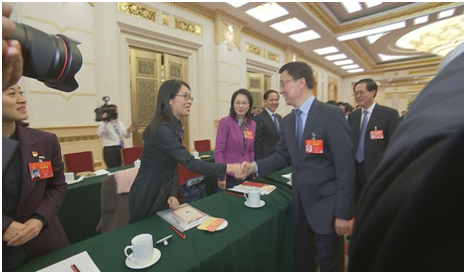"It is impending to build up talents teams due to shortage of general practitioners, gynecologists, pediatricians, psychiatrists, geriatricians and nursing talents in medical services." ZHANG Zhifen, deputy of the National People's Congress of PRC and President of Hangzhou Women's Hospital, submitted Suggestions on Strengthening Construction of Needy Medical Talents Teams during the "Two Sessions" this year.

Ms. ZHANG said shortage of talents mainly resulted from small practitioners base, insufficient output and serious staff turnover. According to China Public Health Statistics Yearbook, there are about 60,000 general practitioners, accounting for 3.5% of total (assistant) practitioners, far behind the ration of 30% to 60% in the world; pediatricians only account for 3.9% of total practitioners, which means 0.46 pediatrician for every 1,000 children, about 1/5 to 1/10 of that in European countries and USA. There are about 3 million registered nurses with a physician to nurse ratio of 1:1.4, far behind the international radio of 1:2.7. There are over 20,000 psychiatrists in China, about 1.49 in every 100,000 people, far behind the international radio of 4 in 100,000 in the psychology health industry. And there are 76,000 anesthesiologists in China, i.e. less than 0.65 for every 100,000 people.
The output of needy talents is also in severe shortage. On one hand, medical schools do not cultivate enough talents, for example, most medical schools replace the major of pediatrics by unified clinic medicine. On the other hand, lack of attractions in the needy posts leads to fewer people (fewer talents of them) after graduation. In the meanwhile, general practitioners, gynecologists, pediatricians, psychiatrists, geriatricians and nursing talents are hard-hit area in the medical health industry with great outflow rates. It is investigated that the outflow rate of nurses in national tertiary hospitals f China is 5.8% on average, even 8%-10% of outflow rate in developed regions such as Shanghai and Guangdong.
In Ms. ZHANG's proposal: we should establish an improved training systems for needy talents . As for higher education in medical schools, well-off regions and colleges can work on setting up more major settings and lager scale and adding more training contents of needy majors in course system setting to cultivate needy talents directionally. As for medical education after graduation, we should expand the recruitment scale of residents standardized training of needy majors. To provide post transfer training for professionals also lay a foundation for them to transfer to other needy specialty. And we should also propel policy enactment and implementation along with medical education.
In the meanwhile, attractions of needy posts shall be promoted. To start with, improve medical environment. Improve medical health industry, especially the social image of needy talents such as general practitioners, psychiatrists, pediatricians and nursing talents; improve physicians' working environment, apply reasonable laws to protect the legitimate interests of medical and nursing staff. Secondly, give priority over title promotion, guarantee personnel public institution and remuneration of needy posts, give policy inclination in title promotion (refer to the act to encourage the person qualifying residents standardization training to work in grassroots medical health organs) to encourage medical talents to engage in needy specialty by allowing them to take Medium Qualification Test for Health Professional Technicians in advance and even have priority over recruitment under the same conditions. Thirdly, guarantee their remuneration. The distribution mode by business income assessment performance greatly destroys enthusiasm of professionals such as pediatricians. It is suggested that a performance distribution mode based on work load and business load to ensure remuneration of talents of needy specialty.
Journalist of The Page.cn LU Mei
Source: The Page.cn